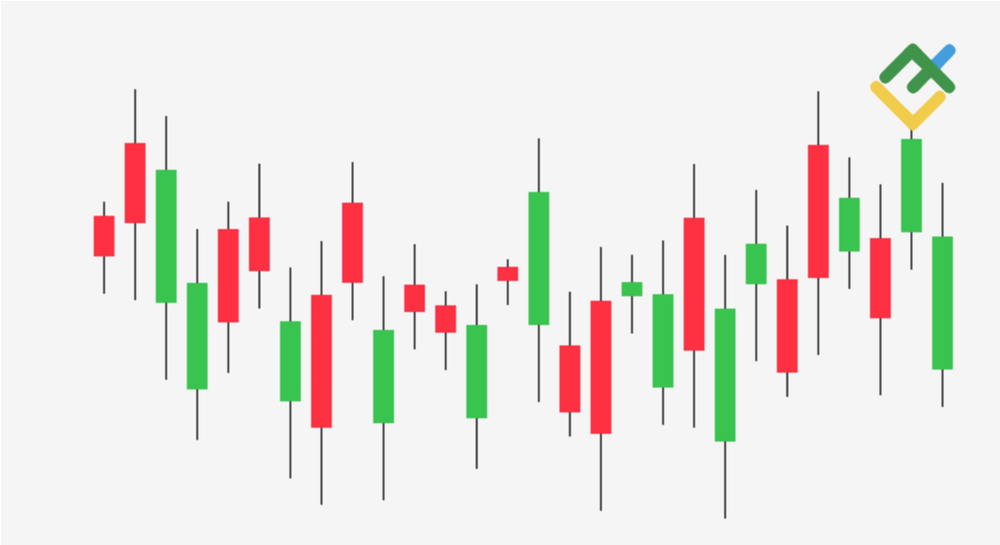
The US Fed’s December meeting minutes, released last week, supported a strong US dollar. They reflected the central bank’s cautious view on any further monetary easing, noting that inflation remains stable. Fed officials suggested that the recent 1.0% rate cut in September–December is still enough. However, they warned of a potential inflation surge with President-elect Donald Trump, depending on his forthcoming foreign and fiscal policy initiatives.
With a strong US economy contrasting with the sluggish growth in China and stagnation in the eurozone, the US dollar is positioned for continued gains this year. So far, the beginning of the year has been quite successful for the dollar, as its USDX index has climbed back to levels seen in November 2022.
Trading volumes are recovering after the New Year holidays. In the upcoming week, 13.01.2025 – 19.01.2025, market participants will focus on the publication of important macroeconomic data on the US, UK, China, and Australia. The highlight will be the release of fresh US inflation data on Wednesday, January 15.
Note: During the coming week, new events may be added to the calendar, and/or some scheduled events may be canceled. GMT time
The article covers the following subjects:
Major Takeaways
- Monday: no important macro statistics is scheduled.
- Tuesday: US PPIs.
- Wednesday: UK and US CPIs.
- Thursday: US retail sales.
- Friday: block of important macro data from China, including GDP for Q4.
- he key event of the week: US CPIs release.
Monday, January 13
There are no important macro statistics scheduled to be released.
Tuesday, January 14
13:30 – USD: Producer Price Index (PPI)
The Producer Price Index (PPI) measures the average change in wholesale prices determined by manufacturers at all stages of production. The index is one of the leading inflation indicators in the United States, estimating the average change in wholesale producer prices.
Rising production costs increase wholesale selling prices, which ultimately boosts inflation. In normal economic conditions, growing inflation usually puts upward pressure on the national currency quotes, implying a tighter central bank monetary policy.
Previous values: +0.4% (+3.0% YoY) in November, +0.2% (+2.4% YoY) in October, 0% (+1.8% YoY) in September, +0.2% (+1.7% YoY) in August, +0.1% (+2.2% YoY) in July, +0.2% (+2.6% YoY) in June, -0.2% (+2.2% YoY) in May, +0.5% (+2.2% YoY) in April, +0.2% (+1,6% YoY) in March, +0.6% (+1.6% YoY) in February, +0.3% (+0.9% YoY) in January 2024, 0% (+0.9% YoY) in December 2023, -0.5% (+1.3% YoY), +0.5% (+2.2% YoY), +0.7% (+1.6% YoY), +0.3% (+0.8% YoY), +0.1% (+0.2% YoY), -0.3% (+0,9% YoY), +0.2% (+2.3% YoY), -0.5% (+2.7% YoY), -0.1% (+4.9% YoY), +0.7% (+5.7% YoY) in January 2023.
If the data exceeds the forecasted value, the US dollar will likely strengthen. Conversely, if the data falls below forecasted and previous values, this will exert pressure on the Fed. This could lead to the Fed’s monetary policy easing, which will negatively impact the US dollar.
Wednesday, January 15
07:00 – GBP: Consumer Price Index. Core Consumer Price Index
The Consumer Price Index (CPI) measures the retail prices of a group of goods and services comprising the UK consumer basket. The CPI is a key indicator of inflation. The British pound’s movement on the currency market and the London Stock Exchange FTSE 100 index performance depend on the release of the CPI data.
In November, the UK consumer inflation rose +0.1% (2.6% YoY) after +0,6% (2.3% YoY) in October, 0% (+1.7%YoY) in September, +0.3% (+2.2% YoY) in August, -0.2% (+2.2% YoY) in July, +0.1% (+2.0% YoY) in June, +0.3% (+2.0% YoY) in May, +0.3% (+2, 3% YoY) in April, +0.6% (+3.2% YoY) in March, +0.6% (+3.4% YoY), -0.6% (+4.0% YoY) in January 2024, +0.4% (+4.0% YoY) in December. The data suggests persistent inflationary pressures in the UK, which are expected to bolster the British pound, particularly if the actual data surpasses the forecasted values.
An indicator reading below the forecast/previous value may cause the weakening of the British pound since low inflation will force the Bank of England to stick to the easy monetary policy course.
The Core CPI, published by the Office for National Statistics, measures the price change in a selected basket of goods and services (excluding food and energy) over a given period. It is a key indicator for assessing inflation and changes in consumer preferences. A positive result strengthens the British pound, while a negative outcome weakens it.
In November,
13:30 – USD: Consumer Price Indexes
The Consumer Price Index (CPI) measures the change in prices of a selected basket of goods and services over a given period and is a key indicator for assessing inflation and changes in consumer preferences. Food and energy are excluded from the Core CPI to provide a more accurate assessment.
A high index reading strengthens the US dollar because the probability of a Fed interest rate hike increases, while a low reading weakens the currency.
Previous values YoY:
- CPI: +2.7%, +2.6%, +2.4%, +2,5%, +2.9%, +3.0%, +3.3%, +3.4%, +3.5%, +3.2%, +3.1%, +3.4%, +3.1% +3.2%, +3.7%, +3.7%, +3.2%, +3.0%, +4.0%, +4.9%, +5.0%, +6.0%, +6.4% in January 2023;
- Core CPI: +3.3%, +3.3%, +3.3%, +3.2%, +3.2%, +3.3%, +3.4%, +3.6%, +3.8%, +3.8%, +3.9%, +3.9%, +4.0%, +4.0%, +4.1%, +4.3%, +4.7%, +4.8%, +5.3%, +5.5%, +5.6%, +5.5%, +5.6% in January 2023.
The data shows that consumer inflation is not declining. Previous figures also suggested a slower pace than anticipated by the US Fed. It remains well below the 2022 figures when US annual inflation hit a 40-year high of 9.1% in June. Inflation in the US is still well above the Fed’s 2% target, which will force US central bankers to keep interest rates high and, in the event of a possible rate cut, then pause for a long time to assess the situation in the country’s economy and labor market.
If the figures are confirmed or prove to be lower than expected, the US dollar will likely decline in value in the short term. Readings higher than estimated will strengthen the currency, as it will increase the probability of the Fed keeping the interest rate at high levels for longer.
Thursday, January 16
00:30 – AUD: Employment Rate. Unemployment Rate
The employment rate reflects the monthly change in the number of employed Australian citizens. The indicator value increase positively impacts consumer spending, stimulating economic growth. A high reading is positive for the Australian dollar, while a low reading is negative. Previous indicator values: +35,600 in November, +15,900 in October, +64,100 in September, +42,600 in August, +48,900 in July, +52,300 in June, +39,500 in May, +37,400 in April, -6,100 in March, +120,400 in February, +11,900 in January 2024, -58,900 in December 2023, +55,500 in October, +13,400 in September, +62,300 in August, 0 in July, +19,800 in June, +83,800 in May, -14,700 in April, +93,800 in March, +45,100 in February, 23,100 in January 2023.
Besides, the Australian Bureau of Statistics will publish a report on the unemployment rate. It is an indicator that estimates the ratio of the share of the unemployed population to the total number of working-age citizens. The rise in the indicator readings demonstrates the weakening of the labor market, negatively impacting the national economy. A decrease in the indicator is positive for the Australian dollar.
Forecast: Australian unemployment has remained at its lowest levels and stood at 3.9% in Decembert (against 4.1% in November, October, September, and August, 4.2% in July, 4.1% in June, 4.0% in May, 3.8% in April, 3.7% in March and February, 4.1% in January, 3.9% in December and November, 3.8% in October, 3.6% in September, 3.7% in August and July, 3.5% in June, 3.6% in May, 3.7% in April, 3.5% in March and February, 3.7% in January, 3.5% in December, 3.4% in November and October, 3.5% in September and August, 3.4% in July, 3.5% in June, 3.9% in May and April, 4.0% in March and February, 4.2% in January), while the employment rate has increased.
The Reserve Bank of Australia has repeatedly stated that the Australian economy and the central bank’s plans are influenced by key indicators like the level of household debt and spending, wage growth, and the state of the labor market, in addition to the international trade situation. If the indicator readings are lower than expected, the Australian dollar may decline significantly in the short term, while higher data will strengthen the currency.
13:30 – USD: Retail Sales. Retail Sales Control Group
This Census Bureau report on retail sales reflects the total sales of US retailers of all sizes and types. The change in retail sales is a key indicator of consumer spending. The report is a leading indicator, and the data may be subject to significant revisions in the future. High indicator readings strengthen the US dollar, while low readings weaken it. A relative decline in the indicator may have a short-term negative impact on the US dollar, while a rise in the indicator will positively impact the currency. In November, the value of the indicator stood at +0.7% (after +0.4% in October and September, +0.1% in August, +1.1% in July, -0.2% in June, +0.2% in May, -0.2% in April, +0.5% in March, +0.7% in February, -1.1% in January 2024).
Retail sales are the main indicator of consumer spending in the United States, showing the change in the retail industry.
Retail sales serve as an indicator of domestic consumption, contributing the most to the US GDP and being one of the main factors of inflation risks increase or decrease. Deterioration of the indicator values is a negative factor for the US dollar. Inflation deceleration may prompt the Fed to begin the process of monetary policy easing.
The Retail Control Group indicator gauges volume in the retail industry and is used to calculate price indexes for most goods. High readings strengthen the US dollar, while low results weaken the currency. A slight increase in the figures is unlikely to boost the dollar. If the data is lower than the previous readings, the dollar may be negatively impacted in the short term. Previous values: +0.4%, -0.1%, +0.7%, +0.3%, +0.4%, +0.9%, +0.4%, -0.3%, +0.9%, 0%, -0.4% in January 2024, +0.6%, +0.2%, +0.2%, +0.2%, +0.2%, +0.7%, +0.3%, +0.4%, +1.0%, -1.2%, -0.1%, +2.6% in January 2023.
Friday, January 17
02:00 – CNY: China’s GDP for Q4. Industrial Production. Retail Sales
The National Bureau of Statistics of China will release the GDP growth data for Q4 2024.
China’s GDP is expected to grow again in Q4 2024 after 0.9% (+4.6% YoY) in Q3, +0.7% (+4.7% YoY) in Q2 2024, +1.6% (+5.3% YoY) in Q1 2024, +1.0% (+5.2% YoY) in Q4 2023, +1.3% (+4.9% YoY) in Q3 2023, +0.8% (+6.3% YoY) in Q2 2023, +2.2% (+4.5%YoY) in Q1, 0% (+2.9% YoY) in Q4 2022, +3.9% (+3.9 YoY) in Q3, -2.6% (+0.4% YoY) in Q2, +1.3% (+4.8% YoY) in Q1 2022, +1.6% (+4.0% YoY) in Q4, +0.2% (+4.9% YoY) in Q3, +1.3% (+7.9% YoY) in Q2 and +0.6% (+18.3% YoY) in Q1 2021.
China is a major buyer of commodities and a supplier of a wide range of finished goods to the global commodity market. Since China’s economy is the second largest in the world, the release of its significant macroeconomic indicators can profoundly influence the overall financial market.
Besides, China is the largest trading partner of Australia and New Zealand, purchasing a significant amount of commodities from these countries.
Therefore, positive macro statistics from China may also exert a positive influence on these commodity currencies. Conversely, if the anticipated data indicates a deceleration in one of the world’s largest economies, it would be a detrimental factor for global stock markets and commodity currencies.
The National Bureau of Statistics of China report on industrial production shows the output of Chinese industrial enterprises, such as factories and manufacturing facilities. The increase in industrial production is a positive factor for the yuan, indirectly signaling the possibility of accelerating inflation, which may force the People’s Bank of China to tighten monetary policy.
Conversely, the decline in the indicator value may negatively impact the yuan.
Previous values YoY: +5.4%, +5.3%, +5.4%, +4.5%, +5.1%, +5.3%, +5.6%, +6.7%, +4.5%, +7.0%, +6.8%, +6.6%, +4.5%, +3.7%, +4.4%, +3.5%, +5.6%, +3.9%, +2.4% in February 2023.
The retail sales level index, published monthly by the National Bureau of Statistics of China, gauges the change in the aggregate value of sales at the retail level across the country. The index is often viewed as an indicator of consumer confidence and economic prosperity and reflects the state of the retail sector in the near term. An increase in the index value is usually positive for the yuan, while a decrease in the index value will affect it negatively. Previous values YoY: +3.0%, +4.8%, +3.2%, +2.1%, +2.7%, +2.0%, +3.7%, +2.3%, +3.1%, +5.5%, +7.4%, +10.1%, +4.6%, +2.5%, +3.1%, +12.7%, +18.4%, +10.6%, +3.5%, -1.8%, -5.9% after +8% in the last months of 2019 and -20.5% in February 2020.
The data indicate that this sector of the Chinese economy continues to recover after a strong decline in February and March 2020. If the data prove weaker than the forecasted or previous values, the yuan may experience a decline, potentially a sharp one.
07:00 – GBP: Retail Sales
The retail sales economic indicator is a key metric that tracks the level of consumer demand and significantly impacts market performance and the national currency. Additionally, it serves as an indirect indicator of inflation, making it a key concern for a country’s central bank and market participants.
he Retail Sales report is released by the UK Office for National Statistics. The Retail Sales change is considered to indicate the consumer spending level. High indicator values are positive for the British pound, while low readings are negative.
Previous index values YoY: +0.5% in December 2024, +2.4%, +3.9%, +2.5%, +1.4%, -1.2%, +1.3%, -2.3%, +0.4%, -0.3%, +0.4% in January 2024, -2.8% in December 2023, +0.0%, -2.3%, -1.1%, -1.2%, -3.1%, -1.8 in June 2023.
Price chart of GBPUSD in real time mode
The content of this article reflects the author’s opinion and does not necessarily reflect the official position of LiteFinance. The material published on this page is provided for informational purposes only and should not be considered as the provision of investment advice for the purposes of Directive 2004/39/EC.
{{value}} ( {{count}} {{title}} )
This post is originally published on LITEFINANCE.



